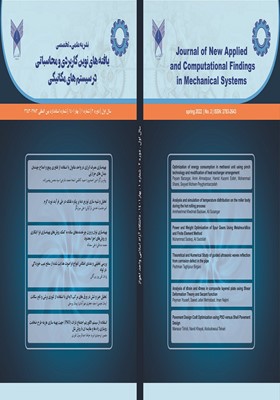-
-
List of Articles
-
Open Access Article
1 - Optimization of energy consumption in methanol unit using pinch technology and modification of heat exchanger arrangement
Payam Barzegar Amin Ahmadpour Hamid Kazemi Esfeh Mohammad Sharei S.M. Peyghambarzadeh -
Open Access Article
2 - Analysis and simulation of temperature distribution on the roller body during the hot rolling process
Amirheshmat Khedmati Bazkiaei Ali Sozangar -
Open Access Article
3 - Power and weight optimization of spur gears using metaheuristics and finite element method
Mohammad Sadeghi Ali Sadollah -
Open Access Article
4 - Theoretical and Numerical Study of ultrasonic guided waves reflection from corrosion defect in the pipe
Pezhman Taghipour Birgani -
Open Access Article
5 - Analysis of strain and stress in composite layered plate using shear deformation theory and secant function
Iman Najimi Saeed Jafari Mehrabadi Peyman Yousefi -
Open Access Article
6 - Optimizing the cost of asphalt road pavement using particle swarm optimization algorithm (PSO) and compare it with the Shell method
Mansour Tohidi Navid Khayat Abdoulrasoul Telvari
-
The rights to this website are owned by the Raimag Press Management System.
Copyright © 2021-2025







